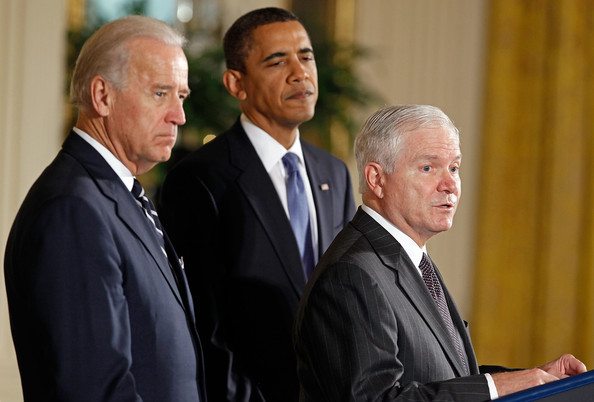In most years, the Department of Defense (DoD) provides a five- or six-year plan, called the Future Years Defense Program (FYDP), associated with the budget that it submits to the Congress. Because decisions made in the near term can have consequences for the defense budget well beyond that period, the Congressional Budget Office (CBO) has examined the programs and plans contained in DoD’s FYDP and projected their budgetary impact in subsequent years.
For this analysis, CBO used the FYDP provided to the Congress in April 2010, which covers fiscal years 2011 through 2015—the most recent plan available when this analysis was conducted. CBO’s projections span 2011 through 2028.
CBO’s Projections
In February 2010, DoD requested an appropriation of $707 billion for 2011. Of that amount, $548 billion was to fund the “base” programs that constitute the department’s normal activities, such as the development and procurement of weapon systems and day-to-day operations of the military and civilian workforce. The remaining $159 billion was requested to pay for overseas contingency operations—the wars in Afghanistan and Iraq and other military activities elsewhere.
CBO focused its analysis on the base budget because it reflects DoD’s future plans for manning, training, and equipping the military.
CBO has projected the costs of DoD’s plans for its base budget (reflected in the FYDP, along with other long-term plans released by the department) by using factors that are consistent with the department’s recent experience. CBO’s analysis yields these conclusions:
- To execute its base-budget plans for the period covered by the FYDP, DoD would need about $187 billion (or 7 percent) more over those five years than if funding was held at the 2010 level of $537 billion. Over the 10 years from 2012 to 2021, DoD would need a total of $680 billion (or 13 percent) more than if funding was held at the 2010 level.
- From 2011 to 2015, DoD’s base budget would grow at an average annual rate of 2.3 percent, after an adjustment for inflation. Beyond the FYDP period, from 2016 to 2028, average annual growth in the costs of DoD’s base-budget plans would be 0.8 percent after an adjustment for inflation. At those rates, DoD’s base budget would rise from $548 billion in 2011 to $601 billion in 2015 and to $665 billion in 2028.
- The primary cause of long-term growth in DoD’s budget from 2011 through 2028 would be increasing costs for operation and support, which would account for nearly all of the increase. In particular, CBO projects that there would be significant increases in the costs for military and civilian compensation, military medical care, and various operation and maintenance activities.
- That large contribution of operation and support costs to budget growth is a change from earlier projections, in which sharp growth in anticipated requirements to replace and modernize weapon systems (the so-called bow wave) was the primary factor underlying budget growth beyond the years covered by the FYDP. In the current projections, acquisition costs would steadily grow from $189 billion in 2011 to a peak of $218 billion in 2017 (an increase of about 15 percent) before decreasing and leveling off—albeit with year-to-year variations—at an average of about $200 billion per year thereafter.
Comparison With Projections Incorporating DoD’s Estimates
CBO compared its projection (labeled in this study “the CBO projection”) with DoD’s estimate of the costs of the FYDP (for the 2011–2015 period) and with “an extension of the FYDP” (for the 2016–2028 period). The latter is a projection based on DoD’s estimates of costs, where they are available for years beyond 2015 (for some weapon systems, for instance), and on costs consistent with the broader U.S. economy, where estimates from the department are not available (for pay and medical costs, for instance).
CBO’s projection of the total cost of the FYDP through 2015—at $2,874 billion—is $41 billion (or about 1 percent) higher than the department’s estimate. Much of the difference derives from an assumption that recent trends in the costs of weapon systems, medical care, and other support activities persist.
By DoD’s estimates, executing its plans for 2011 through 2015 would require real (inflation-adjusted) increases in spending of about 1.5 percent annually (excluding emergency and supplemental funding for overseas contingency operations). Over the five-year period, that growth rate would result in costs that were $146 billion (or 5 percent) greater than the amount of DoD’s budget if it was held at the 2010 level.
By 2015, the end of the FYDP period, annual costs under the CBO projection would be about $18 billion (or 3 percent) higher than the estimate in the FYDP; at the end of 10 years, in 2021, annual costs under the CBO projection would be $34 billion (or 6 percent) higher than the extension of the FYDP; and similarly, by 2028, the end of the projection period, annual costs under the CBO projection would be about $37 billion (or 6 percent) more than the estimate for the extension of the FYDP.
The degree to which the plans laid out by DoD are executed in the future will depend on the amount of funding that will be provided in an era of increasing pressure on the federal budget as a whole and on the success of ongoing efforts to curb cost growth in areas such as medical care and advanced weapon systems. Indeed, Secretary of Defense Gates announced on January 5, 2011, that DoD will trim its plans by a total of $78 billion (or about 3 percent) from 2012 to 2016 in recognition of the fiscal environment.
Because many details of those revisions to plans have not yet been released, an analysis of the possible effects if they were adopted is not possible and is not included in this study.
[Download not found]










